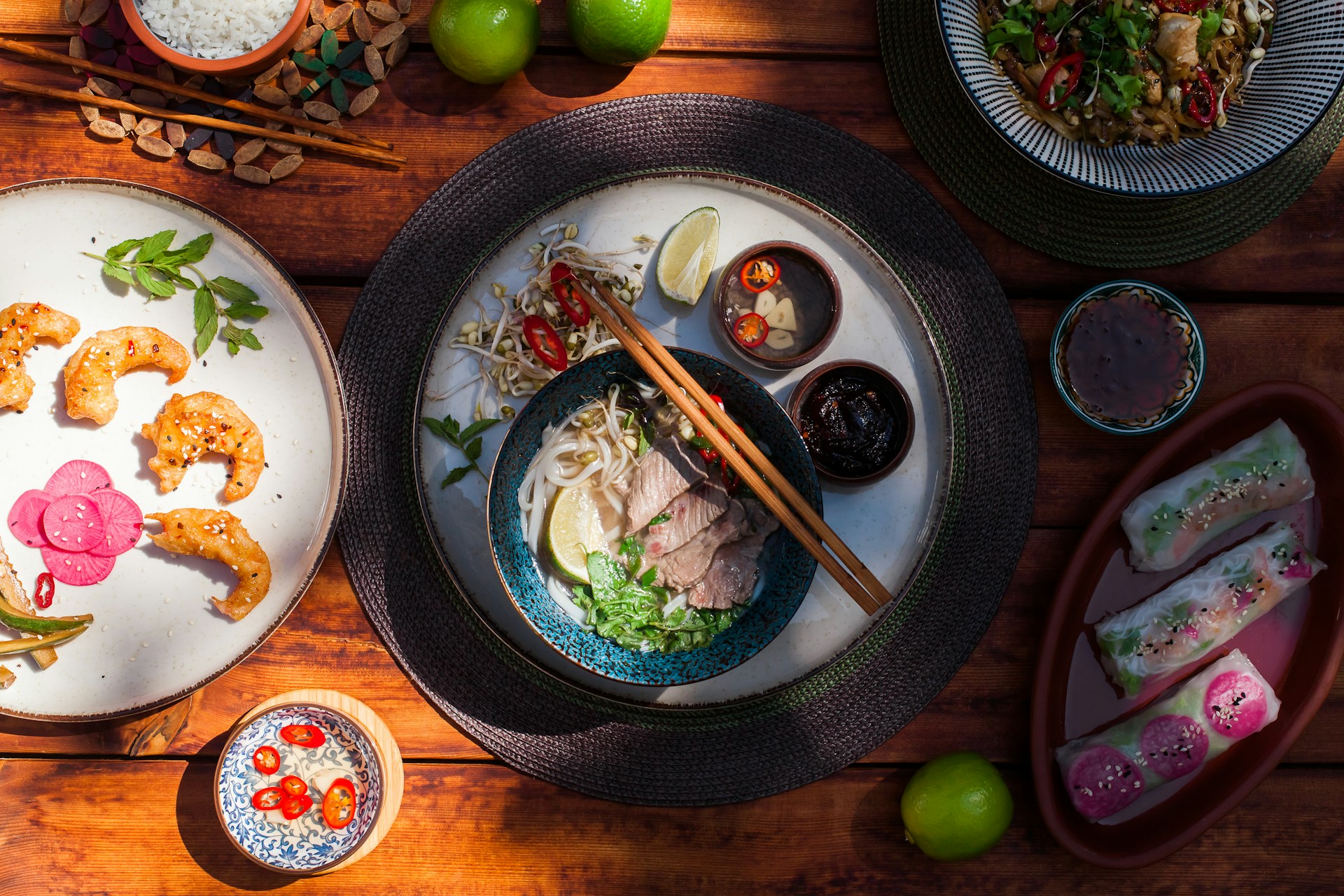
Global fusion cuisine is a rapidly growing culinary trend that combines diverse flavors and cooking techniques from various cultures, creating innovative and exciting dishes. As globalization brings people closer, chefs are increasingly inspired by different culinary traditions, resulting in bold, flavorful combinations. Exploring global fusion cuisine offers a chance to taste how cultures intertwine, offering new and diverse dining experiences.
The Roots of Fusion Cooking
The origins of global fusion cuisine lie in centuries-old cultural exchanges. When people migrated or traveled, they brought their culinary traditions with them, mixing them with the ingredients and techniques available in their new environments. This blending led to the creation of innovative dishes that broke free from traditional culinary borders.
Historically, fusion cooking began long before it became a trendy buzzword. The Silk Road, for example, was one of the earliest known avenues for cultural and culinary exchange, bringing spices, herbs, and cooking techniques from Asia, the Middle East, and Europe into the kitchens of ancient civilizations. As trade routes expanded, so did the exchange of food traditions, giving rise to dishes that combined flavors and techniques from different parts of the world.
In the late 20th century, the term “fusion cuisine” gained prominence as chefs began experimenting with blending various cultural influences. From the California cuisine movement that married Asian and European elements to the infusion of Latin American flavors into European cooking, global fusion cuisine began taking shape. This merging of culinary traditions continues to evolve, offering exciting new possibilities in the kitchen.
Defining Features of Global Fusion Cuisine
Global fusion cuisine is characterized by its bold creativity and versatility. One key feature is the unexpected combination of ingredients from different culinary traditions. By pairing contrasting flavors, such as the heat of Indian spices with the freshness of Mediterranean herbs, chefs can create dishes that surprise and delight the palate.
Fusion cuisine also embraces diverse cooking techniques, such as grilling, steaming, and stir-frying, allowing chefs to experiment with texture and flavor. By combining methods from different cultures, fusion cooking achieves unique and harmonious results. The aim is to enhance the overall dining experience by introducing complexity and novelty while preserving the essence of each ingredient.
Another feature of global fusion cuisine is the emphasis on presentation. As visual appeal plays a vital role in dining experiences, fusion dishes often showcase vibrant colors, carefully arranged ingredients, and intricate plating. Whether it’s sushi presented as a burrito or a pizza layered with colorful fish and avocado, the visual aesthetic is just as important as the taste, making fusion cuisine a feast for the eyes and the taste buds.
Popular Fusion Dishes Across the World
Global fusion cuisine has given birth to some truly innovative dishes. For example, sushi burritos combine the freshness of sushi with the portability of a burrito. At the same time, Korean BBQ tacos blend the savory flavors of Korean barbecue with the classic Mexican taco. These dishes represent how chefs use fusion to combine familiar elements in unexpected ways.
Another creative fusion creation is sushi pizza, which reinvents the pizza concept with a sushi-inspired base of rice and seaweed topped with raw fish, avocado, and flavorful sauces. Fusion dishes like these highlight the exciting potential of combining two different culinary worlds into one unforgettable meal.
Fusion cuisine has also found its way into the dessert world. One example is the “tiramisu ice cream,” which blends the Italian dessert tiramisu with ice cream, creating a decadent frozen treat that combines the richness of mascarpone cheese with the coffee-soaked sponge layers. Similarly, the “matcha cheesecake” combines the delicate flavor of Japanese green tea with the creamy texture of classic New York-style cheesecake, resulting in a delicious and unexpected dessert experience.
Challenges in Creating Global Fusion Cuisine
While global fusion cuisine offers incredible potential for culinary innovation, it also comes with challenges. One of the most significant hurdles is balancing a dish’s many ingredients and techniques. The goal is to create a harmonious blend of flavors without one overpowering the others. A dish that combines too many ingredients from different cultures can become overwhelming rather than exciting.
Fusion chefs must carefully select flavors and ingredients that complement each other rather than clash. For example, while combining spicy elements from Indian cuisine with the sweetness of French pastry might sound intriguing, careful consideration must be given to how these components work together to create a balanced dish. When executed well, the result is a culinary masterpiece; when done poorly, the dish can feel disjointed and unappealing.
Another challenge is cultural sensitivity. Fusion cooking involves drawing from various food traditions, and chefs must approach this with respect and understanding. Successful fusion dishes should honor the culinary origins of the ingredients and techniques they incorporate rather than trivializing or misrepresenting them. This respect for the roots of fusion ingredients and methods can lead to more authentic and thoughtful fusion dishes that resonate with diners and celebrate the diversity of global cuisine.
Looking Ahead: The Future of Fusion Cuisine
The future of global fusion cuisine is bright, as chefs continue to experiment and push the boundaries of traditional cooking. With the rise of plant-based diets and increased interest in sustainable eating, we can expect to see even more creative plant-based fusion dishes that blend flavors from different cultures while prioritizing environmental sustainability.
Technology and social media will also play a significant role in developing fusion cuisine. Platforms like Instagram allow chefs and home cooks to share their creations with a global audience, which drives further experimentation and inspires new trends. As fusion cuisine becomes more accessible through online recipes and cooking tutorials, we may see even more people exploring and embracing cross-cultural cooking in their kitchens.
As the demand for food delivery apps grows, fusion cuisine will likely thrive in fast-casual settings. More restaurants and food trucks are introducing globally inspired fusion dishes that allow diners to explore new flavors quickly and conveniently. This trend will likely continue, making global fusion cuisine more accessible and diverse.